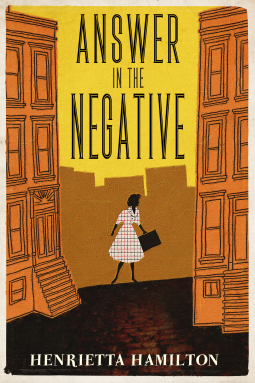Synopsis: At The National Press Archives on Fleet Street, archive assistant Frank Morningside has become the recipient of nasty poison pen letters and cruel practical jokes. With Frank disliked by many, his superior Toby Lorn is concerned and calls on his friends Sally and Johnny Heldar, two amateur sleuths, to investigate. Posing as researchers, Sally and her husband Johnny go undercover to scout out the myriad of suspects at the archive. But just as the Heldars begin to make some progress, Morningside is found dead, bludgeoned by a box of glass negatives, in his office. When another suspicious death occurs within the company, the Heldars fear they may be in over their heads.
What readers need to get their heads around first and foremost is that 1950s Britain was vastly different from today.
The major cities, and particularly in London, there were vacant bomb-sites, unrepaired houses, temporary prefabs and gardens turned into allotments. War damage and a scarcity of manpower and materials created a serious urban housing problem - and the population began to spread out of the city limits, there was talk of demolishing the slums and rebuilding. The continuance of rationing encouraged people to produce their own food in back gardens and allotments. There were also severe shortages of most consumer products, which prompted the continuance of the wartime ‘make-do-and-mend’ culture.
 At this time, Britain was the most urbanised and industrialised country in the world and consequently one of the most polluted. The reliance on coal for both residential heating and energy generation resulted in chronic atmospheric pollution which was harmful both to people and to buildings. The London smog of 1952 lasted five days and killed more than 4,000 people from heart and lung diseases. In industrial areas, factories polluted not only the air but also the waterways, while mines and spoil tips scarred the landscape.
At this time, Britain was the most urbanised and industrialised country in the world and consequently one of the most polluted. The reliance on coal for both residential heating and energy generation resulted in chronic atmospheric pollution which was harmful both to people and to buildings. The London smog of 1952 lasted five days and killed more than 4,000 people from heart and lung diseases. In industrial areas, factories polluted not only the air but also the waterways, while mines and spoil tips scarred the landscape.
The 1950s were a golden age for public transport - buses, trams or trolleys, trains and bicycles were the most common forms of transport; few owned a car.
Public attitudes towards sex and marriage still remained strongly conservative. British society was still strongly influenced by war, with the return of many serviceman and as a consequence there were far fewer women were in paid employment than today. Women were generally not expected to have proper careers, but to seek short-term employment before they married and had children. After the war, many young women gave up paid work and raised a family at home.
The 1951 census showed that only 3 per cent of the population had been born overseas and the great majority of the immigrants were white and European. The largest immigrant group – over half a million – were the Irish - and this is one of the themes running through this book.
The British media in 1950s was still dominated by the press. The national newspapers – all published around Fleet Street – were dominated by autocratic press barons and restrictive print unions. Newspapers were a far more important source of news than they are today.
So this then is our setting for this cosy mystery. Today's readers might find some of the themes running through this as a little dated - but that is what you get when reading something that is over 60 years old and written at a specific time in history.
This isn't the first in the series but there is enough contained within to ensure that you aren't completely left in the dark. However if you are interested in in reading more, these are the books in order of publishing:
So this then is our setting for this cosy mystery. Today's readers might find some of the themes running through this as a little dated - but that is what you get when reading something that is over 60 years old and written at a specific time in history.
This isn't the first in the series but there is enough contained within to ensure that you aren't completely left in the dark. However if you are interested in in reading more, these are the books in order of publishing:
The Two Hundred Ghost (1956); Death At One Blow (1957); Answer In The Negative (1959); and A Night To Die (1959)
I was rather intrigued about finding out more about this author, however, she herself is rather an enigma. I could find nothing about her except the following blurb:
Hamilton name was a pseudonym for Hester Denne Shepherd. She was born in 1920 in Dundee and went to St Hugh’s College, Oxford, where she studied modern languages. In War World Two she served in the wrens and after the war she worked in a London bookshop for a while. She died in 1995.
If you are looking to read something out of your standard comfort zone and for an afternoon's escapism, look no further than this series.

No comments:
Post a Comment